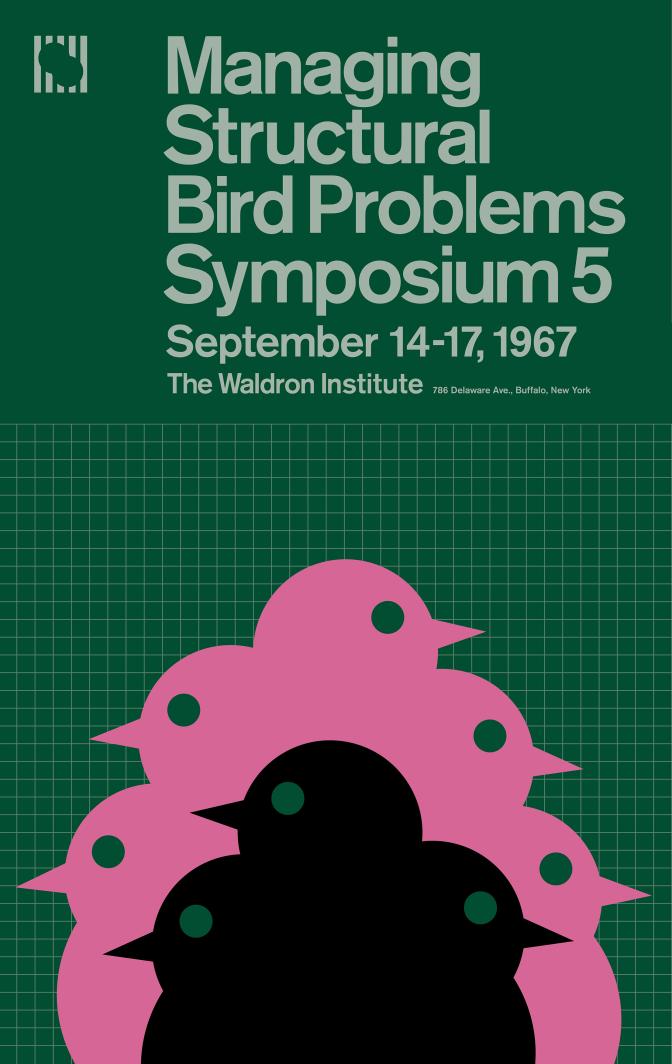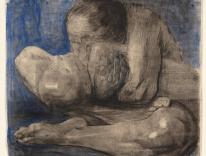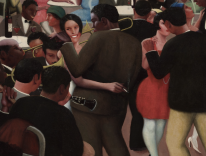Last spring, a shopping cart drifted through my Dallas neighborhood. It was the sort with a plastic car attached to its front, allowing a child to “drive” through the grocery aisles. I first saw it next to a dumpster behind a sports bar. Within days, it was gone, presumably to a landfill.
Weeks later, though, I spotted it a block away on a side street, near the alley. No one had claimed it, not even the trash collectors. The cart’s chipped paint and rust suggested it had been out of official circulation for a few years. It bore no store’s name. It had become a loose feature of urban space: available to anyone, the responsibility of no one, and a nuisance to everyone, much like the e-bikes and scooters that litter the sidewalks.
The next day, the cart sat in an empty corner lot, where a modest postwar home had just been demolished to make way for a colossal duplex. The wrecking crew had placed the cart under a tree. But then the tree was cut down, and the cart went to the curb along with other detritus for bulk-trash pickup. The next time I walked by, more than a week later, the cart had disappeared.
I would have barely noticed this shopping cart, and certainly would not have cared about what happened to it, if I had not first read the graphic artist Julian Montague’s book, The Stray Shopping Carts of Eastern North America: A Guide to Field Identification. The book, originally published in 2006, is the unquestioned, definitive classification guide to shopping carts found in the wide world beyond their home stores or parking-lot corrals. In Montague’s taxonomy, the cart in my neighborhood was, when I first saw it, a Class B, Type 19, stray, “in/as refuse,” and then, on the side street, an instance of B/16, “edge marginalization.” Ultimately, it once again became a B/19. Given what I know of temptation, I suspect that the demolition workers considered turning it into a truly rare specimen: B/20, “bulldozed.”
I loved the book when it was first published, and not only because Montague photographed most of the stray carts in Buffalo, where I grew up. (I admire his style enough that, a few years ago, I commissioned Montague to design an alternative cover to my wife’s book.) The project of classifying the carts by their condition and location—“A/2, Plaza Drift,” “A/3, Bus Stop Discard,” “B/13, Complex Vandalism”—is brilliantly pointless, a triumph of form without function that nevertheless got me to see my environment in a new way.

Now The Stray Shopping Carts of Eastern North America is being reissued in a revised edition. The classification system is unchanged. The photos, some of them updated, depict a broad range of a cart’s possible lives and deaths. One photo shows how the basket of a B/8, “structurally modified” cart was sawed in half and turned into a fence for a small garden. Another shows an A/8 “mixed group” that grew almost gravitationally at the edge of a plaza; each additional cart in the group makes the spot seem more and more like where all carts belong. These carts will likely return to their “sources.” The same can’t be said for the ones depicted in a carefully mapped study of Buffalo’s Scajaquada Creek, where dozens of carts fell victim to B/12, “simple vandalism,” and were “naturalized” (B/21). Mired in silt, they become part of the ecosystem. Plants sprout through their rusting cages.
Montague adopts the bone-dry, documentary tone of a wildlife field guide. He explains that an A/9, “remote false” stray—that is, a cart observed beyond a store parking lot but nevertheless within the cart wranglers’ orbit—is “impossible to differentiate from B/1 Open True without long-term observation and tracking.” Unlike in a guide to birds, though, the key designations have nothing to do with a cart’s inherent qualities. Whether a cart is made of metal or plastic, or whether it has one basket or two, is irrelevant. “True strays exhibit a degree of drift where the source lot becomes indeterminate, and the cart’s new placement mysterious proof of an invisible urban infrastructure,” Montague wrote in a 1999 version of the system reproduced in a new afterword. It’s as if currents in our cities keep the carts in motion until they find a stable niche in someone’s garage, wedged between disused buildings, in a landfill, or, as Montague documents, at the bottom of the Niagara Gorge.
The currents, of course, are human beings, but they are all but absent from Montague’s photographs. Remarkably, just a handful of people are visible in the deep background of a photo of a mangled A/6 (“plow crush at source”) resting atop a huge snow pile in a busy parking lot. The photos suggest that behind the currents are familiar forces like neglect, mischief, and thoughtless do-gooderism. Ingenuity plays a role, too: Montague shows carts employed in apartment complexes to help residents carry laundry and carts with their baskets removed so they can carry bulkier loads. The range of the carts’ experience shadows our own.
This year, the Burchfield Penney Art Center in Buffalo held a mid-career exhibition of Montague’s work. The hundreds of paintings, prints, fliers, and books on display borrowed heavily from mid-twentieth-century graphic design: the colors are bold, the borders crisp, the type Helvetica.
Much of Montague’s work is presented as the often-ephemeral products of fictional characters or institutions. The evolving project “Secondary Occupants / Animals & Architecture,” which he began in 2008, posited someone with a keen interest in creatures who live as uninvited guests in human habitations. Montague searched buildings and automobiles for spiders, collected representatives of each spider species, and preserved their bodies in alcohol. He then scrutinized their faces through a microscope, created simplified designs of those faces, cut the designs from felt and affixed them to banners, hung the banners in the original locations where the spiders were found, and photographed the locations. Later, Montague designed the covers of books that someone obsessed with spiders and other creatures in human spaces might own—titles like Exterminator: A Psychosocial Study of Pest Control Workers and An Infinite Kingdom: Civilization, Fungus, and Time. Even as the exhibition followed a thread to its absurd end, it raised sincere questions about what constitutes a home, what a face looks like, and whether nature is harmonious. I thought of it often while dealing with a series of mammalian and insect invaders in my home a few years ago.

Montague spun additional projects out of “Secondary Occupants” to extend the fictional world. He created covers for the books and records produced by the Waldron Institute, a made-up religious sect that derives apocalyptic meaning from their study of honeybees. Likewise, he designed the exhibition posters for the Thorold Gallery, a fake 1970s art community. In a video worthy of a Christopher Guest film, two real university professors play faux scholars offering context and analysis of the work of the gallery’s contributors. In 2013, Montague and several German collaborators designed an entire ersatz conference for their fictional organizations to participate in, including a ninety-two-page program complete with presentation abstracts and presenter bios. In these projects, Montague told me in an interview, he’s often “appropriating the authoritative voice of modernism” to tell a “cosmic joke.” You can create a scientific system, he said, but it “doesn’t make the world any less absolutely bizarre.”
The central characters in these fictions are as absent as the human agents are in the shopping-cart project. We only know them through the artifacts they leave behind, just as we often know a creature by its abandoned nest or web. It’s worth asking if an artwork also tells us something about its maker. Montague insisted that the person who immersed himself in “the world of the spiders” is a character, not really him. Fair enough, but whereas a novelist’s character only acts within the imaginary world, Montague really did document all the spiders and shopping carts, using the same skills and aesthetic he employs to design posters and murals for real galleries, companies, and schools.
The members of the Waldron Institute may be “psychos,” as Montague described them, but his designs for them and his other clients, real and fictional, exhibit an earnest belief that the world, however bizarre, is intelligible, and it can be represented via an almost universal visual language. Montague draws influence from designers like Fred Troller, whose countless book covers for Doubleday became the graphical signature of Cold War intellectual life. Troller’s minimalist designs reflect a conviction that ideas matter, that they are accessible to a mass audience, and that a systematic approach to societal problems could solve them.
Montague has said the shopping-cart project makes no social commentary. But it does call attention to the cart as a contested object dwelling at the fuzzy boundary between public and private. Carts belong to stores, but they feel like common property, not unlike the parking lots where they spend much of their time. The carts are there for the taking, but they are meant to be returned and infinitely reused to facilitate commerce. People who steal or vandalize them, then, both strike a blow against consumer capitalism and signal a degraded sense of social trust. Or, as advocates of the “shopping-cart theory” claim, people who fail to return a cart to its corral reveal their bad personal morality.
The world of shopping carts is changing. Smaller families and the explosive growth of delivery services have surely altered who uses carts, and how often. Today, more than 15 percent of U.S. retail sales occur online, compared with less than 3 percent in 2006. A “shopping cart” is now often a virtual entity, an icon in the upper-right corner of a webpage, visible only to you and your sock retailer. These carts don’t go astray, but online shoppers do “abandon” them without making a purchase nearly 70 percent of the time. The carts we leave behind on our browsers say something about us as individual consumers, but because they leave no physical trace, they say nothing about our life together in the world.
I have noticed a spike in stray shopping carts in Dallas, especially along the bike trail I use several times a week. Conditions for cart-spotting are ideal: many big-box stores and apartment complexes sit adjacent to the trail, as does a shallow creek. Carts often appear beneath overpasses, where I occasionally see small encampments, though rarely any inhabitants. Almost invariably, the carts become B/18 specimens, used as “refuse receptacles.” But at some point, they were likely someone’s transportation or shelter. People who appropriate shopping carts may be grabbing onto one of the few public goods they can find.
In an essay collected in The White Album, Joan Didion claims that she listens to call-in shows to understand what is really happening in the country. Today, the news tells us there is a housing crisis, that homelessness is a growing problem, that the social safety net has too wide a mesh. We don’t need stray shopping carts to tell us these things. But if we train our eyes to see them, the carts can tell us something more specific and poignant: Here are the gaps, the edges, the hollows in society. Here are the places where public life gives out.
The Stray Shopping Carts of Eastern North America
A Guide to Field Identification, revised edition
Julian Montague
University of Chicago Press
$22 | 184 pp.
Please email comments to [email protected] and join the conversation on our Facebook page.
Previous Story
Is ‘Bronze Age Pervert’ Born to Rule?
Next Story
Is AI Poised to Replace Humanity?


